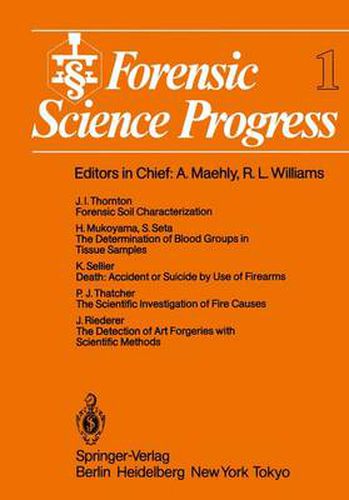Readings Newsletter
Become a Readings Member to make your shopping experience even easier.
Sign in or sign up for free!
You’re not far away from qualifying for FREE standard shipping within Australia
You’ve qualified for FREE standard shipping within Australia
The cart is loading…






This title is printed to order. This book may have been self-published. If so, we cannot guarantee the quality of the content. In the main most books will have gone through the editing process however some may not. We therefore suggest that you be aware of this before ordering this book. If in doubt check either the author or publisher’s details as we are unable to accept any returns unless they are faulty. Please contact us if you have any questions.
Among the sampies collected from the crime scene, tissue sampies such as bone, tooth, hair, nail, skin, muscle and others are very important trace evidence which provide us with available information for personal identification. In order to obtain such information, these tissue sampies should be thoroughly examined using conventional methods including morphology and histo-pathology as weIl as blood grouping. Through the methods described above, blood grouping will give us reliable informa tion for personal identification to a high degree of certainty. In order to succeed in determining blood groups from tissue sampies, the techniques used should be carefully selected because the content and the distribution of blood group substances are different for various tissue sampies. Moreover, blood group antigen activities are susceptible-to postmortem changes leading to the lowering of their activities. From this point of view, it is essential to adopt a specific and highly sensitive technique for grouping oftissue sampies for routine use. Depending on tissue conditions, adequate pre treatment of the sampies will be required for concentrating blood group substances. For routine blood grouping of tissue sampies, the absorption-inhibition, the hemagglutination-inhibition and the absorption-elution technique prevail and are most favoured in forensic science. In cases of single epithelial cells and extremely small tissue fragments, the mixed agglutination technique can be recommended. Adding to these routine methods, immunohistochemical techniques such as those using fluorescein-Iabelled antibodies, enzyme-Iabelled antibodies and ferritin-Iabelled antibodies have been recently applied to the blood grouping of tissue sampies.
$9.00 standard shipping within Australia
FREE standard shipping within Australia for orders over $100.00
Express & International shipping calculated at checkout
This title is printed to order. This book may have been self-published. If so, we cannot guarantee the quality of the content. In the main most books will have gone through the editing process however some may not. We therefore suggest that you be aware of this before ordering this book. If in doubt check either the author or publisher’s details as we are unable to accept any returns unless they are faulty. Please contact us if you have any questions.
Among the sampies collected from the crime scene, tissue sampies such as bone, tooth, hair, nail, skin, muscle and others are very important trace evidence which provide us with available information for personal identification. In order to obtain such information, these tissue sampies should be thoroughly examined using conventional methods including morphology and histo-pathology as weIl as blood grouping. Through the methods described above, blood grouping will give us reliable informa tion for personal identification to a high degree of certainty. In order to succeed in determining blood groups from tissue sampies, the techniques used should be carefully selected because the content and the distribution of blood group substances are different for various tissue sampies. Moreover, blood group antigen activities are susceptible-to postmortem changes leading to the lowering of their activities. From this point of view, it is essential to adopt a specific and highly sensitive technique for grouping oftissue sampies for routine use. Depending on tissue conditions, adequate pre treatment of the sampies will be required for concentrating blood group substances. For routine blood grouping of tissue sampies, the absorption-inhibition, the hemagglutination-inhibition and the absorption-elution technique prevail and are most favoured in forensic science. In cases of single epithelial cells and extremely small tissue fragments, the mixed agglutination technique can be recommended. Adding to these routine methods, immunohistochemical techniques such as those using fluorescein-Iabelled antibodies, enzyme-Iabelled antibodies and ferritin-Iabelled antibodies have been recently applied to the blood grouping of tissue sampies.